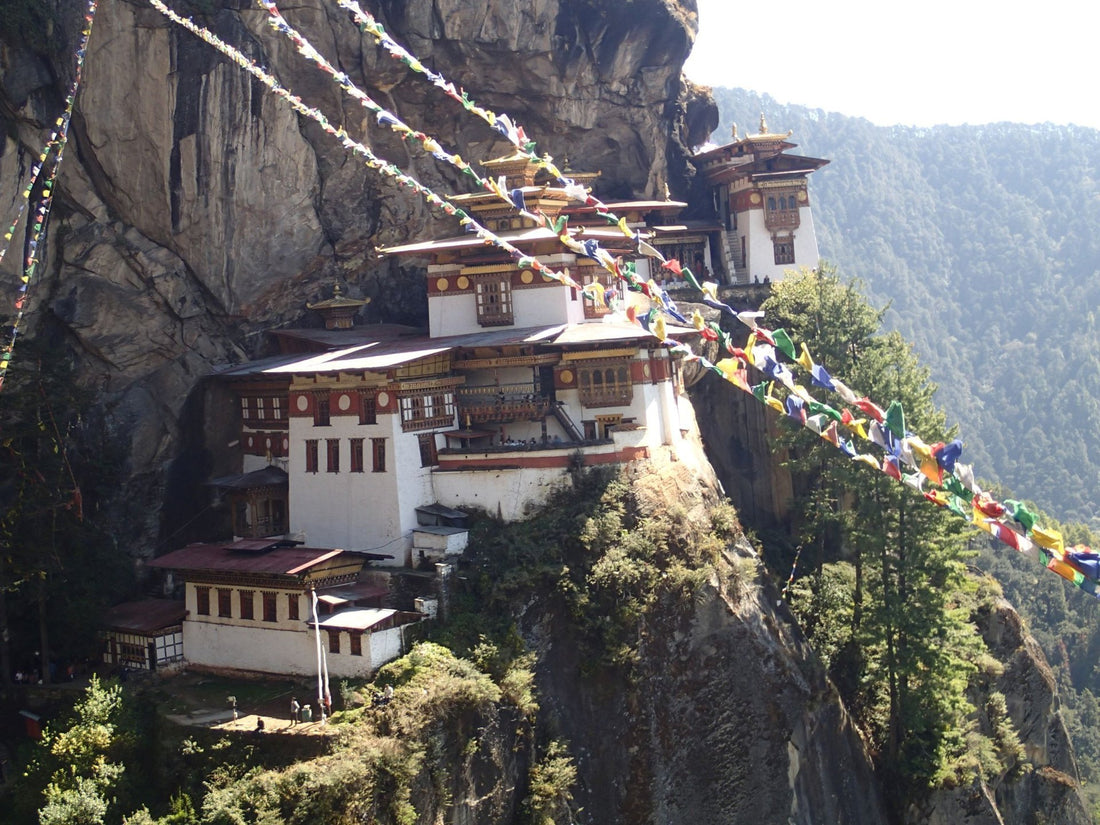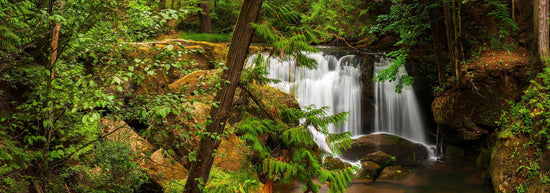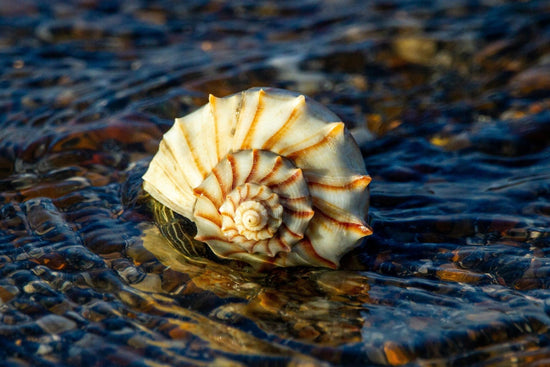The Taktsang Monastery, also known as Tiger’s Nest, sits at an altitude of over ten thousand feet, around three thousand feet above the floor of Bhutan’s Paro Valley below. It’s autumn. Looking down into the valley, I see rectangles of red; the chili harvest, laid on the roofs of houses to dry in the sun.
The trail to reach the monastery includes eight hundred stone steps, some up, some down. It is here, I’m told, that the Guru Rinpoche meditated in a cave for three years, three months, three days, and three hours. The monastery was built around the cave complex in the 1600s and was rebuilt in 2005, after being destroyed by a fire.
The beginning of the trail passes a collection of mini-stupas under an outcropping of rock. The last third of the trail is covered in prayer flags. This is the trail that pilgrims take to the monastery. When we arrive, I take off my shoes, and step cautiously in through the door. The monastery inside is dark compared to the bright mountain sunshine outside. Our guides tell us that we’re lucky; the monk is giving blessings. The air inside is heavy with the smell of incense. I approach the monk in residence, bow my head, and cup my hands. He ladles water into them, and I spread it over my head. I look up at his face, worried I had done something wrong, and he smiles down at me, the skin around his eyes wrinkling.
During my brief time in the Paro Valley of Bhutan, I visited many monasteries and dzongs; Taktsang was only the most spectacular one. The use of incense was ubiquitous across all of them. Though we think about incense in terms of smoke cleansing or as an aid to meditation practice, there’s another aspect to the burning of incense in the Buddhist practice of Bhutan; that of the offering.

Burning Incense as an Offering
The offerings that we saw in the dzongs of Bhutan fell into three broad categories: water, incense, and food. The incense offerings are made to please the senses of Bodhisattvas and local spirits; for example, households will burn incense as an offering to the protective spirits of nearby mountains. This is an example of Buddhism in Bhutan mixed with a local animistic faith known as Bon. Followers of Bon also practiced smoke cleansing, so the practice of burning incense from Buddhism struck a natural harmony with the Bon faith.
Originally, the incense burned in Bhutan was a ground mix of aromatic plants, such as juniper, cypress, and others. This mixture was burned on the embers of a fire. But the Bhutanese have embraced the use of stick incense, and this has broadened the list of aromatic substances used. The offering of incense is a daily practice in most Bhutanese homes. The act of offering incense is known as Sang, which means to clean or purify in Dzongkha.
It is important to understand the difference between an offering and a sacrifice; offerings in Bhutanese Buddhism are not intended to be a sacrifice, or to bring hardship on the giver. Offerings are intended to be gifts to sentient beings that are pleasant to the senses. This includes offerings that are beautiful to the eye, delicious to the sense of taste, sweet to the ear, pleasant to the tactile sense, and aromatic to the sense of smell.
Making an Offering of Incense
One of the ways this practice differs from other uses of incense is that it is focused on those outside the user. While we may use the incense to cleanse ourselves and our spaces, or to focus our attention for meditation, using incense as an offering requires you to focus on beings other than yourself.
You can make an offering of incense to whoever you like; to a god or gods, to spirits, even to one’s ancestors. The important part of the offering is intention, as is the case with many rituals and meditations. It is common practice to repeat a mantra. In Bhutan, a commonly used mantra is om ah hum. Since this is likely from a different culture than your own, you may find another mantra is more meaningful to you.
When making the offering, one should generate within themselves a sense of altruistic feeling, of a genuine intention to give. One should visualize first a pure and empty space, a space that is clean and free of feelings of guilt or obligation. Then visualize filling that space with the offering being given, and then this offering being sent out to the beings for whom it is intended.
Benefits of the Incense Offering

As you can see, the purpose of burning incense in Bhutanese Buddhism is three-fold; to purify, to focus the mind, and as an offering. These uses are not distinct; the act of giving incense as an offering also includes the act of purification (purifying one’s self, as well as creating clean and empty space), the act of focusing one’s mind (in the practice of developing intention and visualization), and the act of offering the incense itself. These acts are blended together, a complete whole. If you choose to burn incense as an offering, this practice is not intended to supersede the practices of purification or meditation, but to complement them.
If you want to give incense as an offering, you don’t need to begin a Buddhist practice, or burn Bhutanese incense, or use a Bhutanese mantra and visualizations. The important thing is the intent to give. This will fit into whatever practice is most meaningful and comfortable to you. Empty yourself of feelings of guilt and obligation and selfishness, and fill yourself with giving.
The practice of giving unselfishly has benefits to the giver. Studies have shown that giving improves not just the happiness but the health of the giver. It’s a beautiful thing to incorporate into your current faith or practice, and may bring you a fuller sense of connection that makes your interactions with other people more meaningful and powerful.





1 comment
Beautiful. I love the practice of burning incense as an offering. This sounds like it was an amazing adventure as well!